What A Year It Has Been Here In The Mara
24 December 2018 | The Mara | Nicky Fitzgerald

BENJAMIN OBANDA
On 17 November, as I began my morning game drive, something caught my eye on the road down next to the dam. At first l thought they were vultures because of the flashing white in a distance but looking with binoculars I noticed the white flashes were tails: four wild dogs on an impala kill! A few minutes later whilst descending the hill we saw the dogs running across the road less than ten meters from the vehicle. It was my first time seeing wild dogs, and I felt so lucky to see them at a close range. I wish I could have taken a picture, but because of the steepness of the hill I was concentrating on the brakes. This was my most memorable 2018 sighting.

FRED OLE SINONI
Following a light storm from the previous night, we set off on our early morning walk with the plan to meander along my favourite route. The quantity of resident herds of zebras, topis, impalas, and giraffes, together with the cheerful inquisitive couple, slowed our pace; fortunately, my guests were not in a rush. Eventually we reached the forest and immediately things changed, the atmosphere was filled with melodious bird calls, and one of the guests couldn’t hide it anymore: “Wow! What a peaceful place,” she whispered.
We hiked to the baboon cliff to enjoy a better view of the forest below. As soon as we settled on the crest to take a breather, we experienced the highlight of our expedition: a male Mwanza Flat-headed Agama lizard was busy displaying the normal push-ups ritual. Suddenly, something caught his attention, and with lightning speed he launched a strike. A closer look revealed it was a rewarding catch – a frog, probably one of the reeds. He tried to swallow, but alas too big, and he dropped it on the rock and started devouring it in manageable pieces. I always thought that lizards exclusively feed on insects and seeing them kill a bigger prey like a frog made this was all the more impressive.
JOHN “NEKE” PEENKO
They say giraffes are almost mute, but earlier this year I heard one growl like a lion when a mama giraffe struggled to save her new born calf. It was a struggle that took hours, and at one point the lioness almost managed to kill the calf, but the mother bravely and successfully defended her baby.

ALICE MANTAINE
It was an incredible day on the banks of the Mara River when a herd of Thomson’s gazelles followed a herd of zebra with the same intention of crossing. After a few minutes of moving up and down the bank, the zebras decided to cross the river, and immediately the Thommies followed suit. Within the blink of an eye, the crocodiles moved fast towards the gazelles, and what was incredible, was seeing the biggest crocodile of all take a gazelle and swallow it whole, in one bite! I have never seen such a thing.
KENNETH TANUI
My best sighting of the year was when I saw a baby hippo carried away by the strong current of the Mara River and, within no time, crocodiles claimed the baby. The young one was approximately two weeks old and I suspected the mother was too inexperienced to ensure that the baby should have been in shallow water. I found this interesting because usually crocs and hippo coexist, but not this time as the crocodiles took advantage of the careless mother.
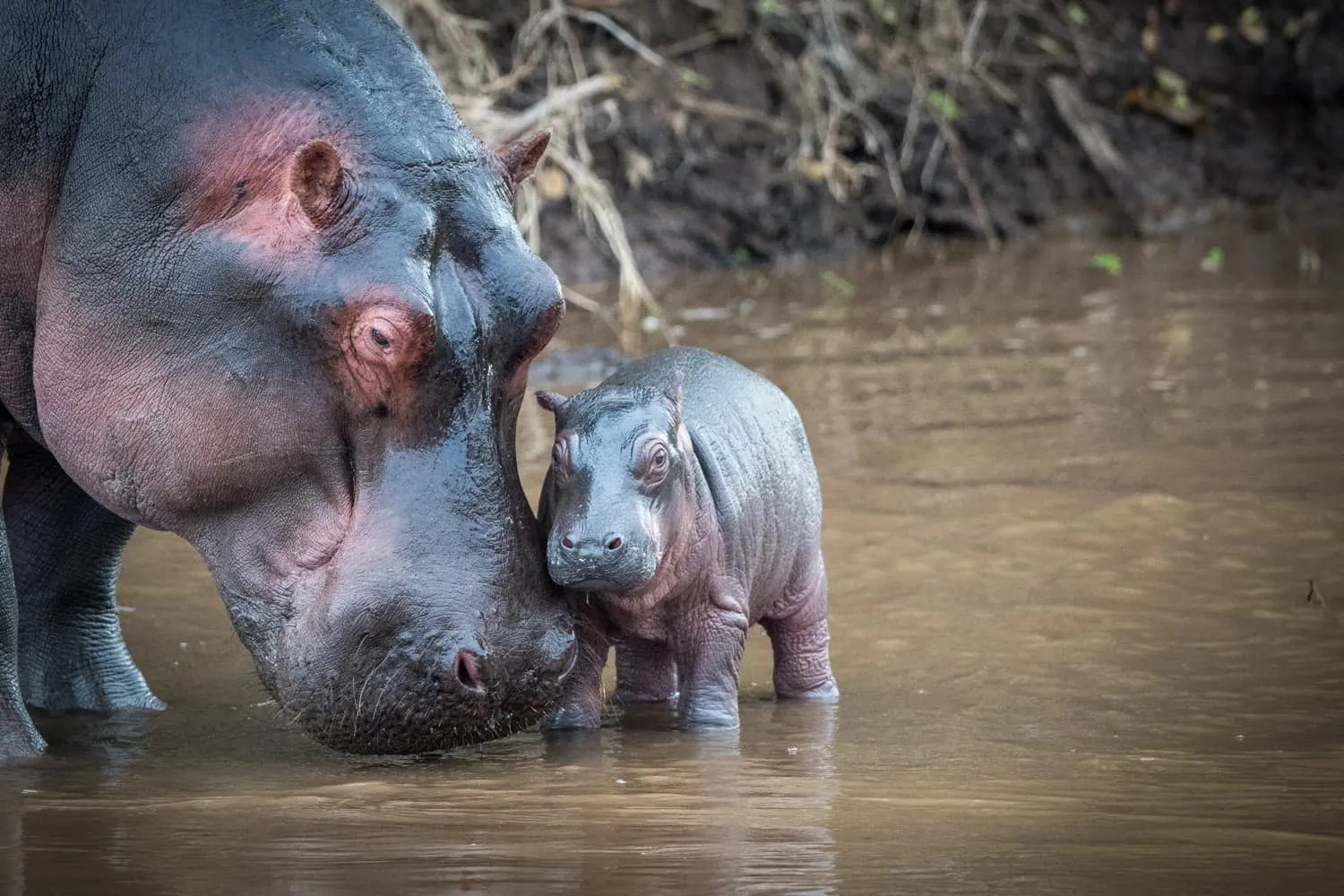
SOPHIE SADERA
What a wonderful day it was as we started with the balloon in the morning and then headed to the river to wait for a crossing. There was a good number of zebras and a few wildebeest at Main Crossing, so we waited for a few hours until they decided to cross.
When the time came, massive crocs moved in from every corner for their meal. While concentrating on the crocs, we were taken by surprise as a pride of lions came running towards the herd and managed to kill two zebras! This attack stopped them from crossing and the herds headed to another crossing point where the hungry crocs made more kills. One zebra came out with a big opening on its belly, and hyenas started to follow that zebra for their meal. I have never seen so much action, and eventually my guests said they’d had enough, and we went back home.

MOSES KIBET
Two male lions had been spotted below camp by one of our guides as she headed out on a drive at 6:30am. When I left with my guests two hours later, the other vehicles had dispersed, so we got a private sighting. As I drove down the hill I was asking myself why the two male lions hadn’t moved as it was getting hot, only to get there and find out they had been digging for most of the night. The lions seemed exhausted but took turns at digging and shoveling into a warthog burrow and, every once in a while, you could hear squealing the deeper they dug. After watching them for 45 minutes, at last a loud squeal and the prize was unveiled. A fight between the two brothers ensued, but they were so exhausted they just decided to share their meal peacefully.
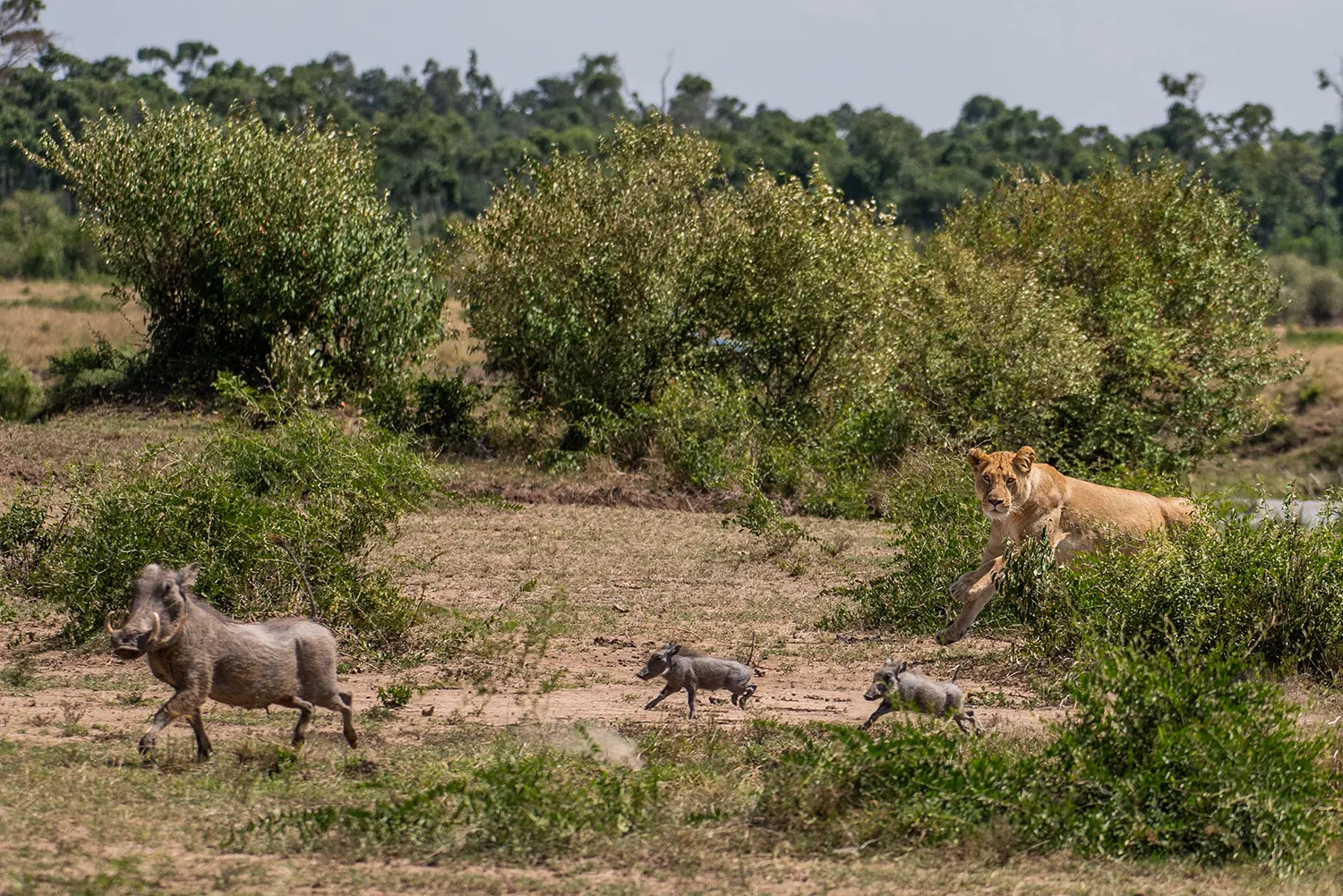
DOUGLAS ONSONGO
A leisurely all-day drive that started mid-morning delivered one of the rarest sights in all my 8 years of guiding. August being a month when the Mara Triangle experiences an abundance of herbivores with the arrival of the Migration, it’s a month when lions, cheetahs, and leopards are on a killing spree, with hyenas cashing in on easily available carcasses.
We arrived when three sub-adult lions were done feeding on a gnu carcass from the previous night. I noticed a hyena hidden in what remained of tall grass waiting patiently for its turn. Vultures with wings open against the sun surveyed atop from trees.
As soon as it warmed up and the lions left, the hyena was in charge of the carcass, and vultures started descending from every direction as the hungry hyena filled its belly, an event which subsequently attracted two jackals. In this commotion, the hyena gave in to mounting pressure from the vultures and the jackals, just as four Southern Ground-Hornbills, who were busy foraging nearby, found their way to the carcass and started bullying every vulture in their way. Just then a large monitor lizard was slowly getting closer as vultures gave way. In 45 minutes, we had seen three lions, a hyena, many vultures, two jackals, four Southern Ground-Hornbills, and finally the large monitor. It was a sequence in interaction you don’t witness every day and was my highlight for 2018.
DANIEL NJIRIRI
My best sighting for 2018 was short but very exciting. My guests and I were looking for Grey Crowned-Cranes with two chicks we had seen the previous day.
When I stopped to use my binoculars to scan for the cranes, I saw all the animals running, and we could hear cranes alarming. Although we could see the cranes the focus now became figuring out why all the commotion. We drove closer but we could not see why they were alarming because the grass was tall. I told my guests we should stay put for some minutes before approaching closer, because if it was a predator we might interfere with its plan.
After 5 minutes, from behind a termite hill, out came more than 40 banded mongooses running towards us, and behind them a young male leopard in full chase. As we watched, he caught one and killed it before dropping it to continue his pursuit. By now he was very close to my vehicle, where he caught another two and again dropped them to pass us while still running to catch another one! Finally, with this one in his mouth, he walked back close to the vehicle, where he picked the two mongooses before gathering in the first mongoose he had caught. He took the four mongooses to a nearby small bush to feed.
We could not stop thinking and talking about this unusual sighting the whole day – even the whole year!
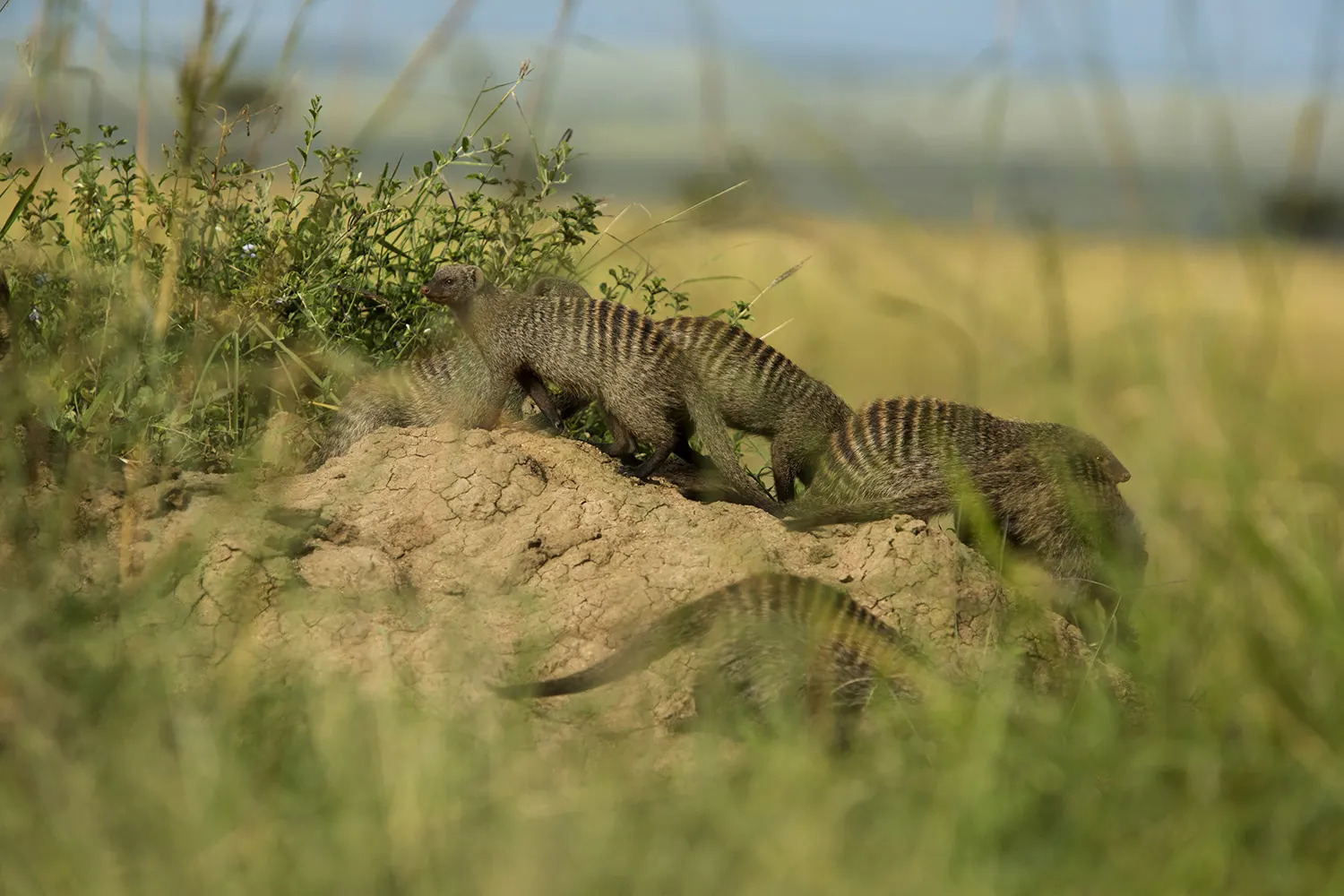
WILSON NAITOI
It was midday, we had been trying to look for wildebeest crossing the Mara River, but no luck. We decided to watch a few wildebeest and zebras crossing a dry river bed, when suddenly a female lioness appeared in full speed and caught a young zebra five metres in front of our car! At first, the mother zebra ran away, but then she turned back, running towards the lioness. She tried to bite the lioness on the hind leg, then kneeled down trying to get a better position to bite, but the lioness jumped and ran away, and the mother rescued her baby.
SAMMY KOMU
We set out on an afternoon drive with two guests who were well-travelled and had seen most of the animals, except for a rhino.
Just a few kilometers from the park entrance, we came across a young lion on top of a mound. We watched him for a few minutes when we heard on the radio that there were wild dogs close to our dam, feeding on an impala kill. We dropped what we were doing and rushed up, hoping that they were still there. Unfortunately, when we got there, they had already been chased away by baboons.
We waited there for a few minutes, hoping they would come back and, just as were about to give up, Fred called me and said that if we went to Mara West side we would see them. We walked into the forest and, luckily enough, as we came into a clearing, we saw the four wild dogs on the other side of the hill. Everyone was excited, mostly my guests for whom it was their first time to see wild dogs.
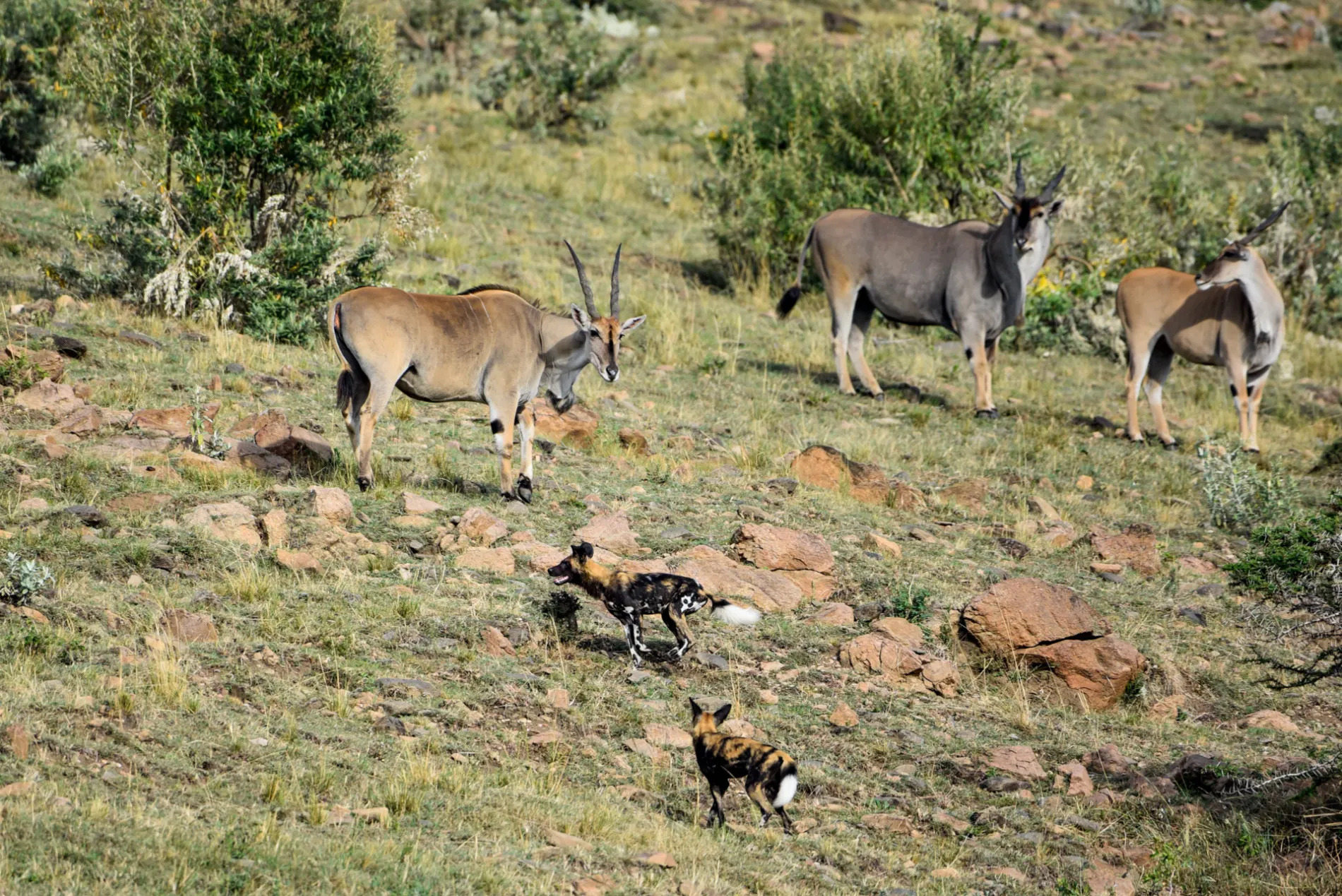
GEOFFREY NJOROGE
In August I saw something I have never, in all my years of guiding throughout Kenya, seen before: a pangolin.
One of our security staff on his off days found a pangolin stuck in an electric fence near his home, not far from Angama. When the pangolin tried to uncurl itself, it would expose its soft parts and get a shock, so curled back up again.
We immediately mounted a rescue and a group of us drove as fast as we could to his home, about 20 minutes away. When we got there, they had managed to free the pangolin, but it had gone straight into a very shallow hole and some of the local herders were digging it up when we arrived. We helped so that we could redirect the pangolin into a nearby hole that was deeper and more suitable, safe from dogs and boys with sticks. When it got into this hole, we could hear and feel it digging deeper and deeper beneath our feet. I was amazed by how big it was, and feel so lucky to have seen it.
JOHNNY GITHINJI
It was around midday when we found a pretty female leopard having an afternoon siesta on a tree branch. Suddenly, she woke up and came down from the tree and started walking towards where we were – about a mile away the leopard had spotted ostriches with five chicks, and she was using our vehicle as a cover.
We watched her stalk for a few minutes, until her presence was noticed by the flock and the male ostrich sounded an alarm. The female and the young ones started running away but the male stood his ground ready to confront the leopard – the strangest thing I’ve never witnessed! On seeing this, the leopard gave up and went back under the tree and laid down to continue her siesta.
TITUS KAREGA
The previous afternoon was rainy and so we hadn’t gone for a safari, but some guests had witnessed a pride of lions bring down a buffalo below North Camp, so I knew where to start for one of the big cats when we set off early the next morning. My guests had already spent a lot of time with lions, but I explained to them that animals behave differently and so it was worth stopping awhile.
The Angama Pride is big, comprising a coalition of two males, four adult females, and eleven subadults. On arrival the pride had nearly completed eating a whole buffalo, and they were doing what they love doing best after a full stomach. Flat cats weren’t as interesting to my guests, but I took the opportunity to explain what unusual behavior it was for lions to be hunting buffalo.
Scanning with my binoculars I could see the subadult males, so we set off to see what they were doing since they were nearby water and might drink. As I had positioned the vehicle for good photos with the morning light, I was caught by surprise and had to ask my guests if what I was looking at might be what I thought it was. Twenty meters away stood a wild dog staring at the lions whilst we stared at them!
No one gets to talk of wild dogs since we rarely see them, and the last sighting I had was at least a year ago when they were transiting through the Mara Triangle. I was so excited that I asked my guests for permission to call the Angama photography and safariLIVE teams to come quickly. It was the first sighting of the wild dogs for over a year, and I was so happy to spot them and let my guests see something new and exciting.
ROBERT KIPROTICH
My highlight of the year came from a sighting when zebras were crossing the Mara River at Mawemawe Crossing. A few crossed over from the Greater Mara side, but one decided to go back since the other members of its family had been left behind. Unfortunately, there were lions waiting on the bank on the other side, and big crocs on the middle of the river.
In his indecision, the zebra was caught by a croc on a right rear leg, and he was struggling now to escape death on both sides. I thought the croc would finish the business, but fortunately the brave zebra struggled, fighting for his life, and after a long and dramatic battle, he made it back to the Mara Triangle side. But then we noticed he was all bloody and losing his organs from a large wound. The fight had been too much, and he could not move anymore, and collapsed. We found his carcass the next day, and watched as dozens of vultures and hyenas had a feast – it was a wild sighting and interesting to see the whole story.
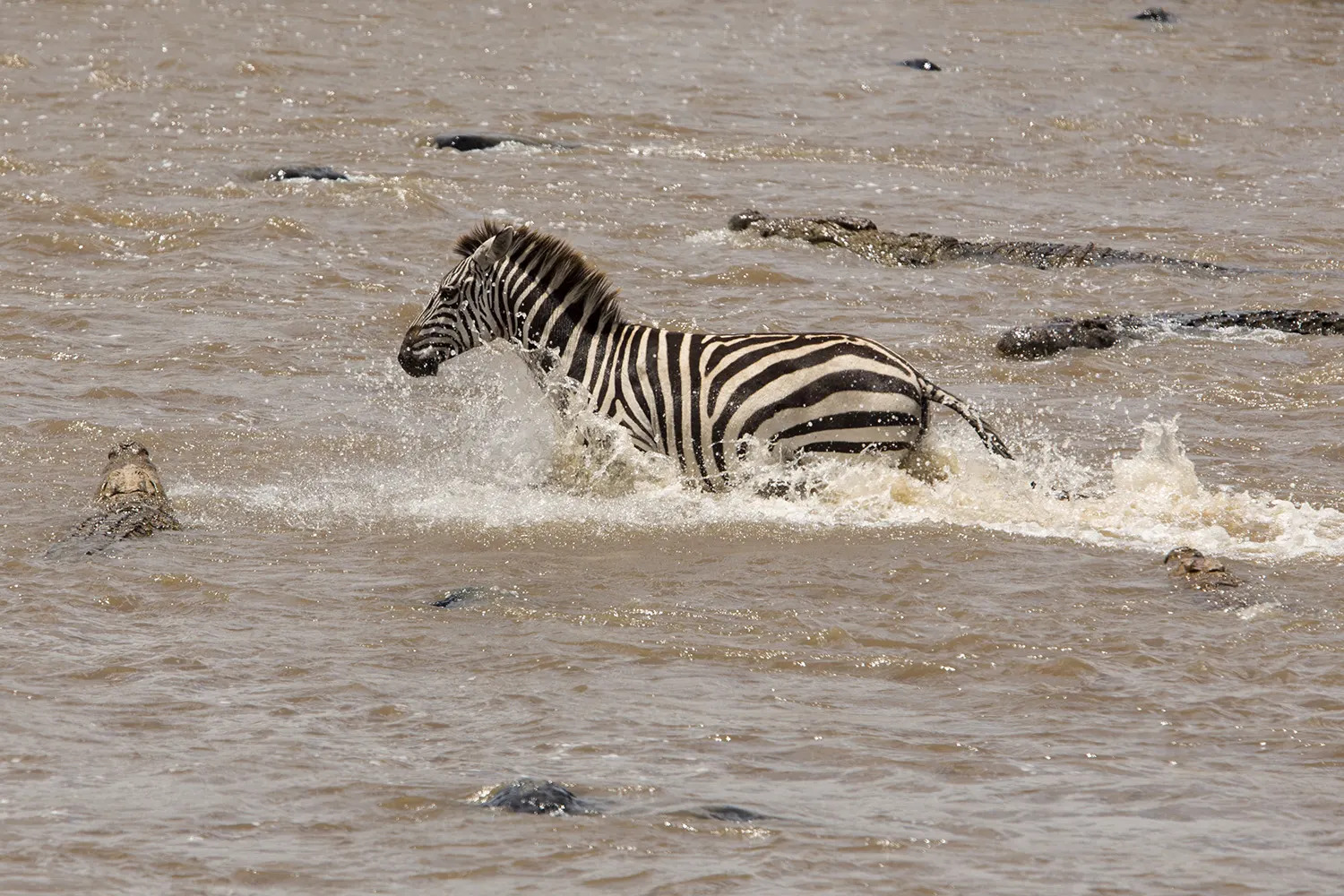
JACKSON ETOOT
I started the day well, by taking our guests for hot air ballooning. This was followed by a series of awesome sightings, including spotting all the big five plus a cheetah chase that brought down a Thomson’s gazelle – but that wasn’t enough for nature’s generosity! As we wrapped up the day, in the evening going back to the Lodge, we spotted a porcupine with two little babies just close to our BBQ – something very special, and this made my sighting of the year!
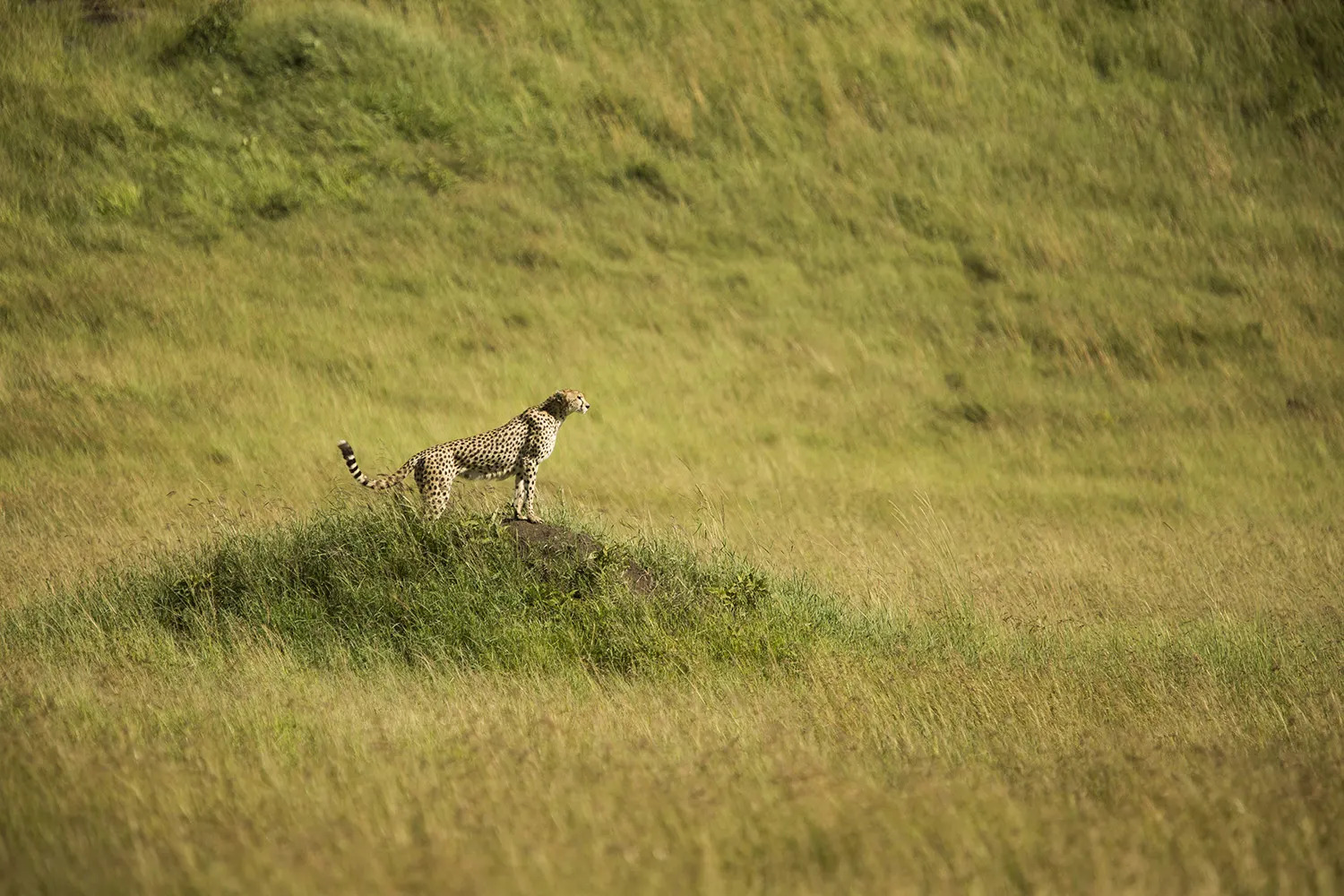
ERICSON LEMAALO
“The Mara never disappoints” is a slogan that is so true. It was a super cool sunrise at our beautiful lodge one Sunday morning. We cruised along the escarpment to make sure my guests enjoyed the exclusiveness of the Mara Triangle. The birdlife here is extraordinarily amazing, and those rocky slopes along the Oloololo Escarpment are ideal areas to spy large raptors like Crowned Eagles and Martial Eagles as they use the updraft created by wind hitting the vertical walls of the cliffs.
I set up a picnic breakfast in a private and strategic spot below the escarpment, overlooking the beautiful plains of the southern part of the Mara Triangle. Using the vital guiding technique of being proactive, I had already informed my guests that we were deep into wilderness, within a well-known lion territory.
After breakfast, I used binoculars to scan the wildebeest herds, which helped me read animal behavior. I followed the gaze of the wildebeest and found the Sausage Tree Pride eating a buffalo, what a sighting! While watching the lions eating, scavengers arrived in huge numbers, such as Black-backed Jackal, vultures, and hyena, but they were kept at bay by the male lion guarding his kill.
A business of mongooses then arrived in a style, popping their heads in the long grass, with a mission to scavenge, even with the lions watching. But one confident little animal just walked majestically toward the buffalo kill.
Suddenly a lioness stalked slowly closer and closer to the mongoose and jumped like a warrior, killing the hapless mongoose! I still don’t understand the taste of mongoose because the drama continued with a male lion claiming a piece of flesh. I have never seen anything like this before, and it was an extraordinary and special day for my guests and me.
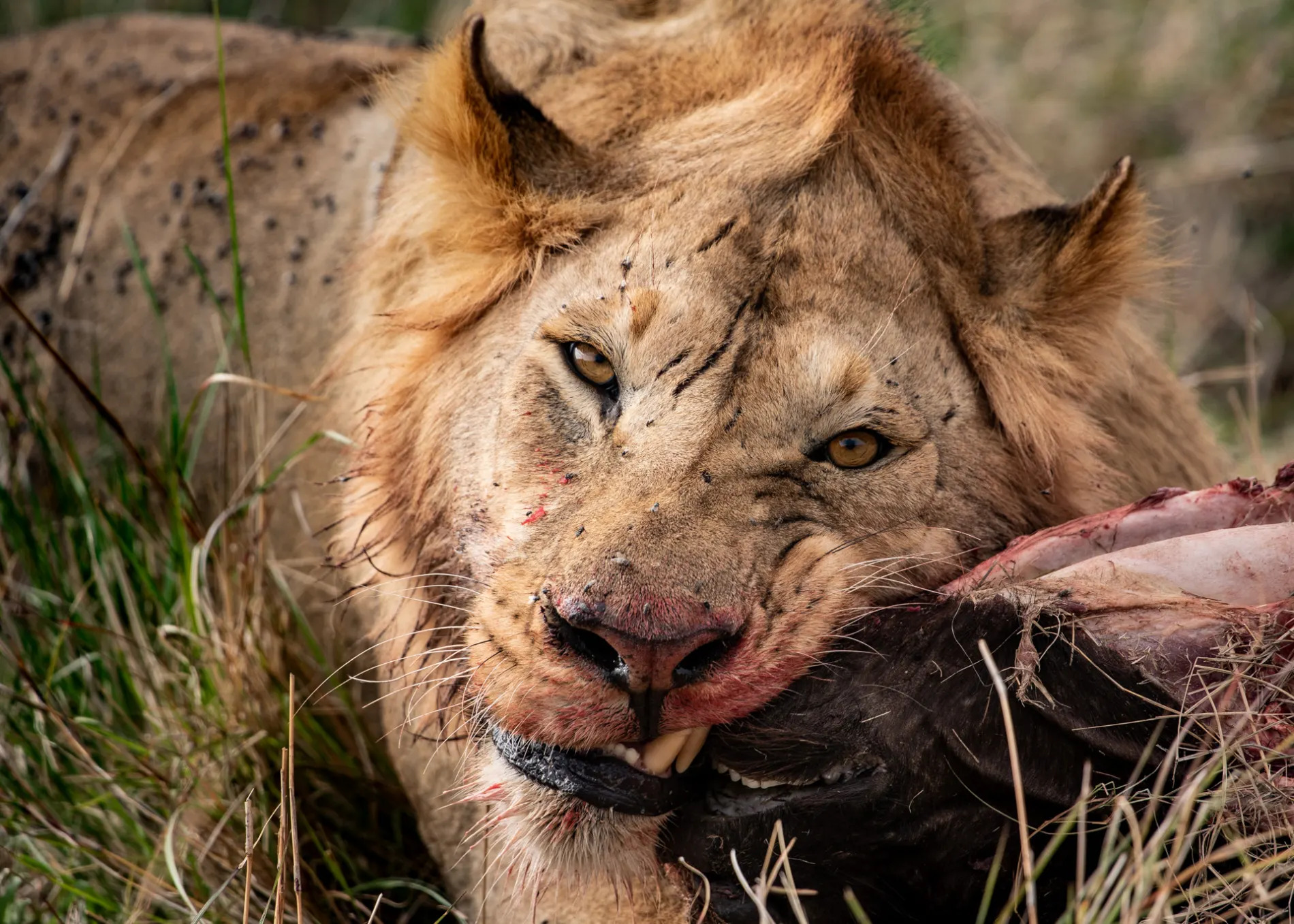
Note from the Editor: Once a year we ignore the 500-word limit for our weekly story because what happens here in the Mara Triangle daily is on a whole other level and simply too good not to share with our readers. Wishing you all wonderful end to this year and here’s to more excitement in the Mara in 2019.


